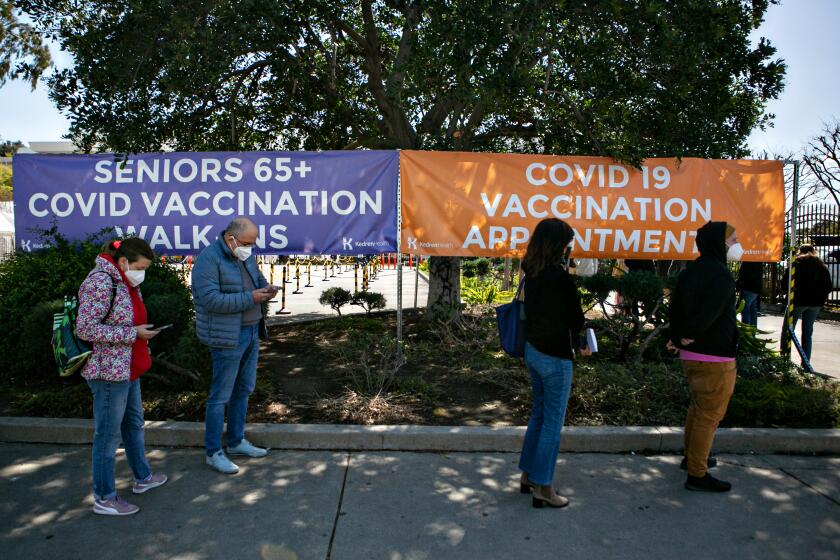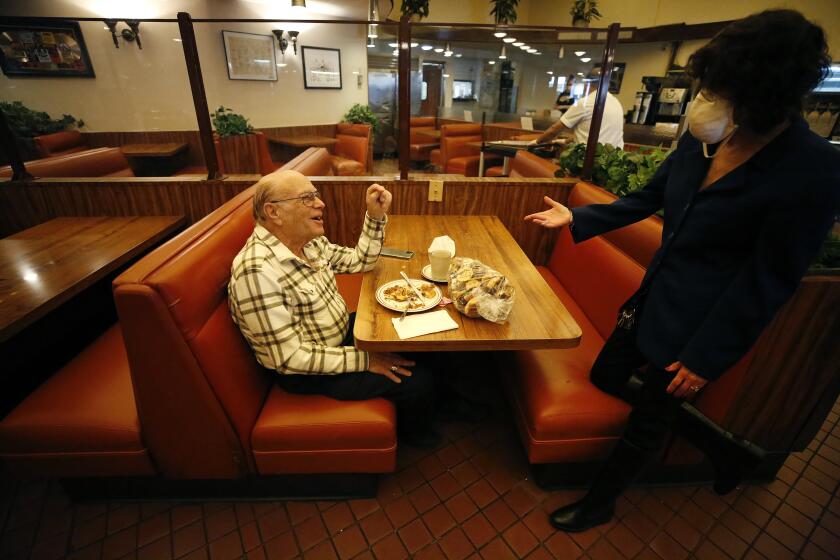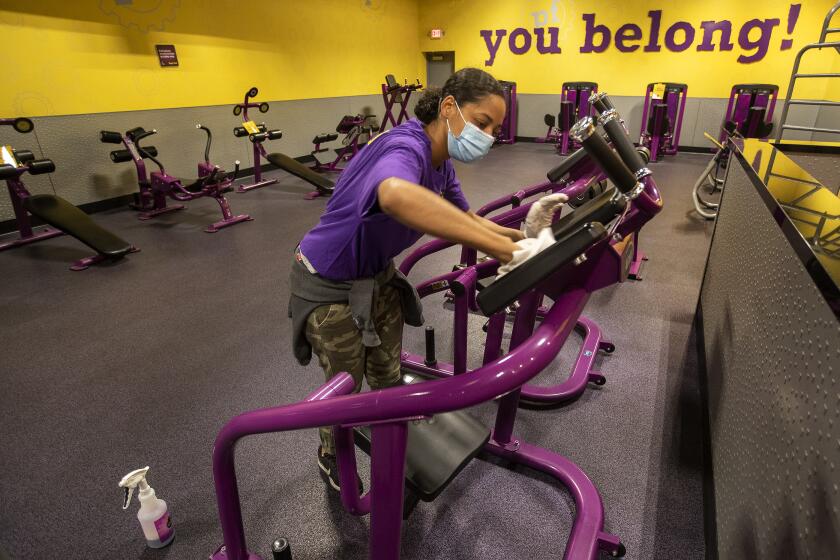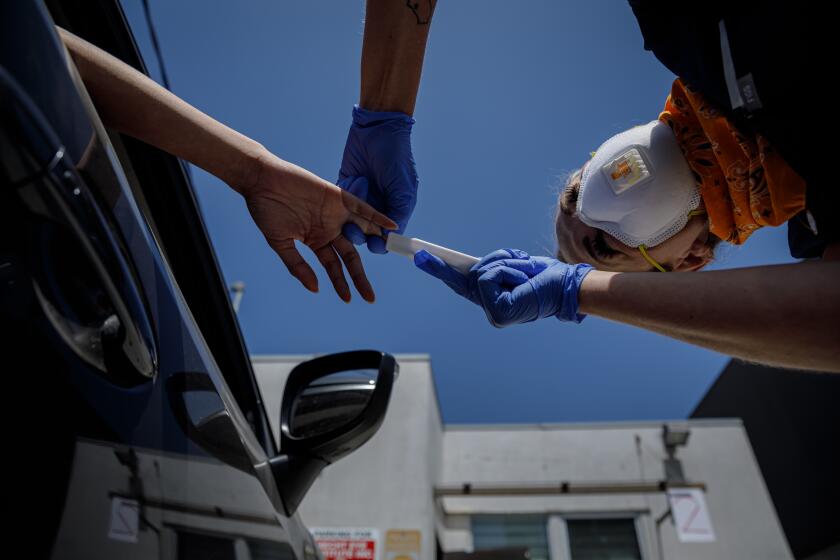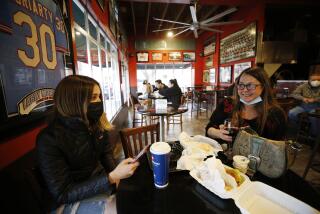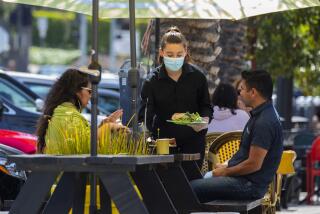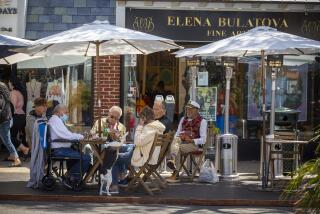Southern California reopens: Riverside, Ventura, San Diego counties join others moving into red tier
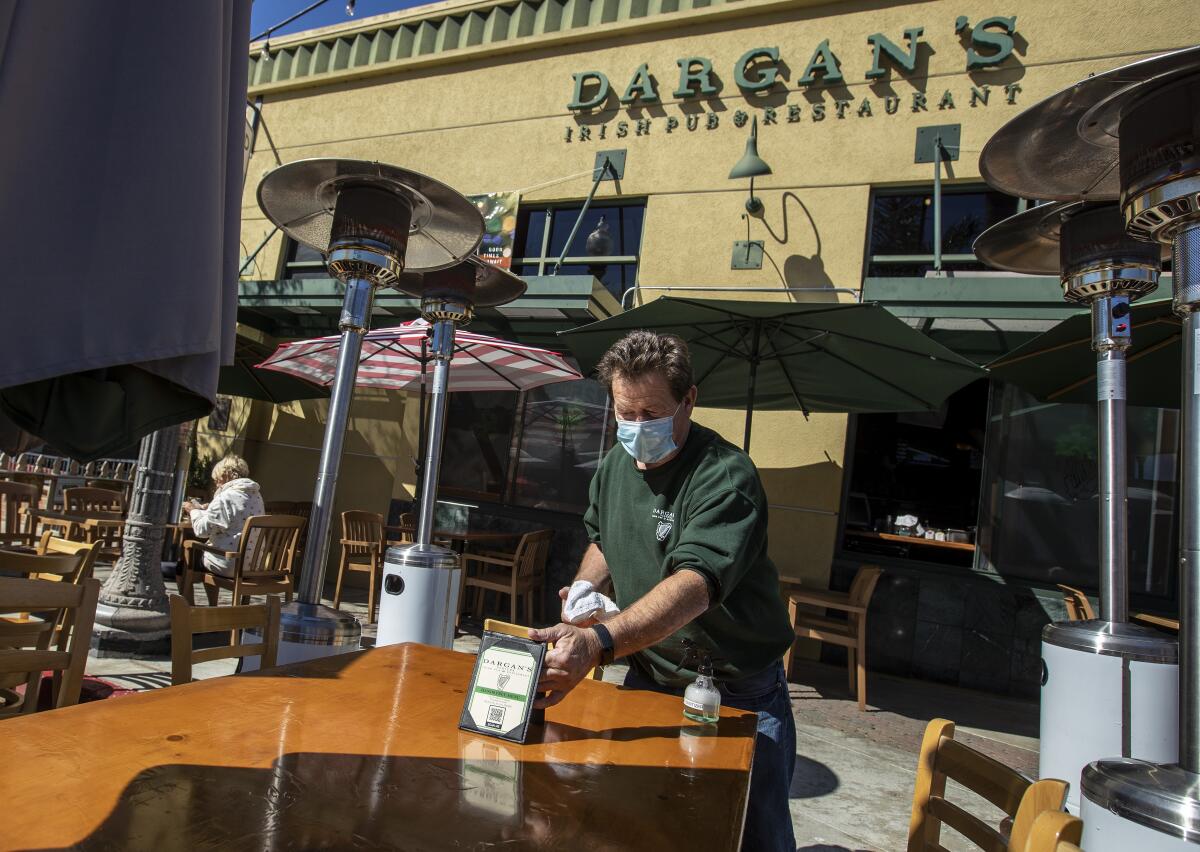
- Share via
When Dargan’s Irish Pub & Restaurant in the heart of downtown Ventura was ordered to close to indoor diners, the timing could not have been worse. It was St. Patrick’s Day 2020 — typically one of its busiest days.
Perhaps it is only fitting, then, that precisely one year later, the restaurant will be welcoming people back inside.
“It’s been a tough year, but we’ve gotten through it,” Dargan’s owner, Liam Sherlock, 62, said Tuesday as he cleared boxes, wiped down tables and prepared to fling the doors back open to the public. “We’re resilient people, aren’t we?”
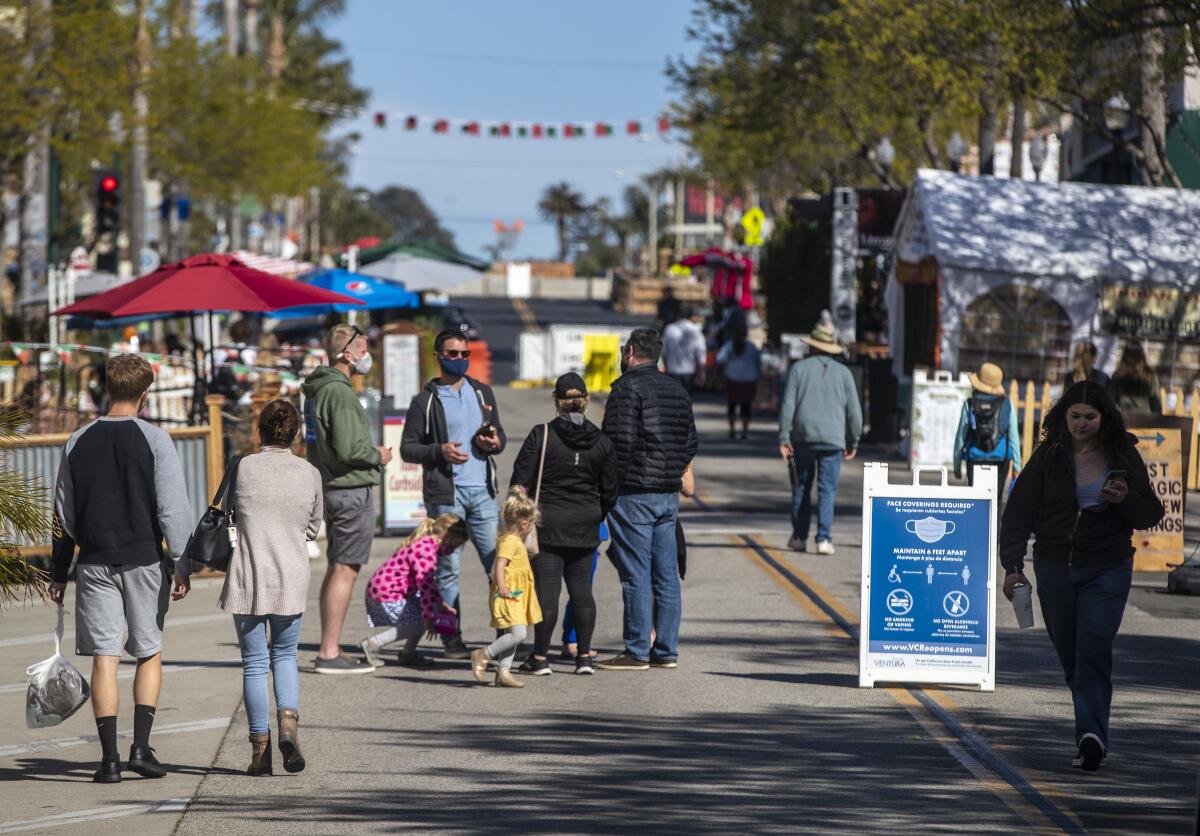
Ventura on Wednesday will join nine other counties — including San Diego, Riverside, Sacramento, Ventura and Santa Barbara — in giving California’s coronavirus canvas a distinctively red hue as they escape the most restrictive rung in the state’s color-coded reopening map.
The exodus from the strictest purple tier to the more lenient red tier, unveiled through updated data released Tuesday, leaves only a smattering of counties subject to the most severe limitations and represents the widest unlocking of the state’s economy in months.
“It feels great to know that we have some sense of liberty coming back,” said Daniela Villa, 22, as she sipped margaritas with friends outside another Ventura restaurant, Limón y Sal. “We still have to be safe, but we have a little bit more freedom now.”
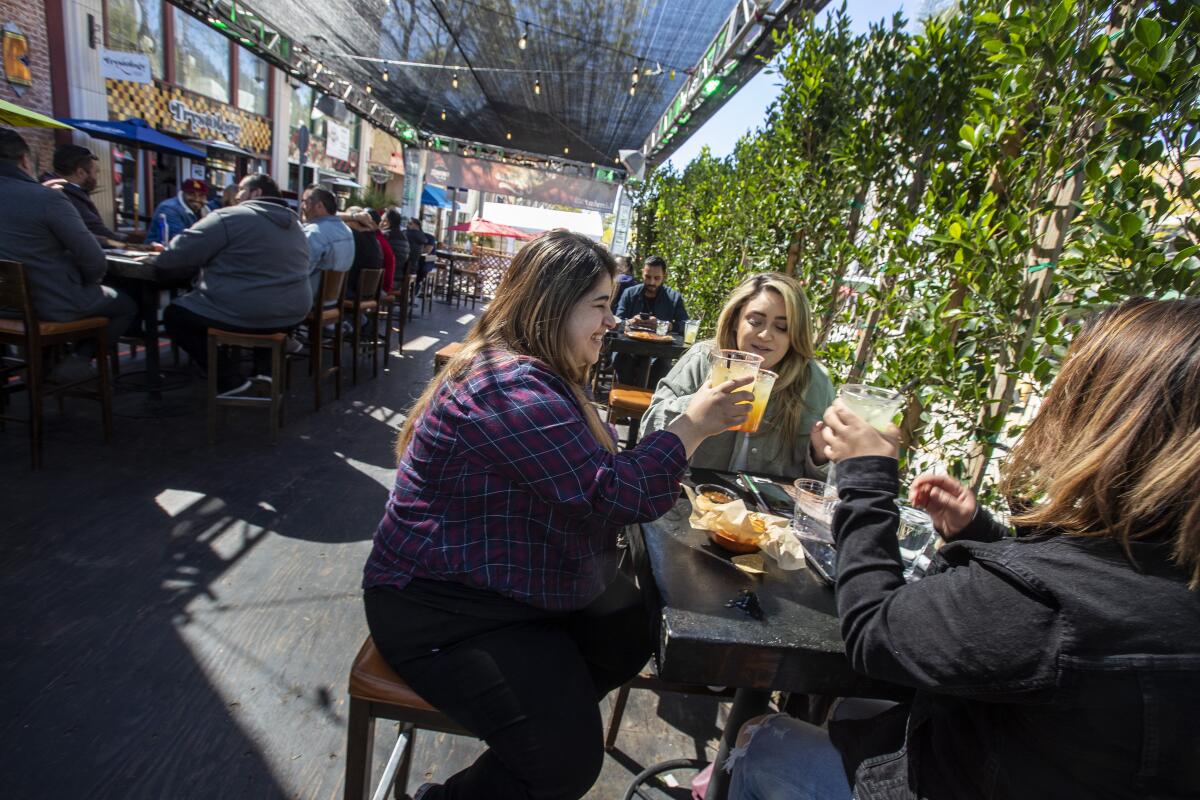
Inside, servers and waitstaff buzzed as they unstacked tables and chairs that had gone unused for months.
“We’re excited, but we’re also taking precautions,” said Ruben Sanchez, one of the restaurant’s managers. Before the pandemic, there were about 120 employees, he said, most of whom had to be laid off. Now, the restaurant has hired back about 30.
“We had to call more people, get more product ... and make sure we have enough beer for tomorrow,” he said Tuesday of the reopening. “We’re getting back there, little by little.”
During a media briefing Tuesday, Gov. Gavin Newsom said the county advancements mean “more and more business activity, more people back in schools” and demonstrate “more energy, more optimism about the state and its future.”
“We saw a lot of movement last week, we’ve seen a lot movement this week, you’re going to see even more movement next week,” he said.
California’s newest coronavirus vaccine rollout will live or die on trust and honesty. Will it work?
The tier progression was made possible by a significant shift in California’s reopening strategy, implemented after the state met its self-set goal of administering 2 million COVID-19 vaccine doses in the most disadvantaged communities.
Upon reaching that target, the state began allowing counties with up to 10 new cases per day per 100,000 people (adjusted based on the number of tests performed) to exit the purple tier. Previously, only counties with case rates at or below seven per 100,000 people could move into the red tier.
The looser requirement helped clear the way for 13 counties — Los Angeles, Orange, San Bernardino, Contra Costa, Sonoma, Placer, Mendocino, San Benito, Tuolumne, Siskiyou, Amador, Colusa and Mono — to progress over the weekend.
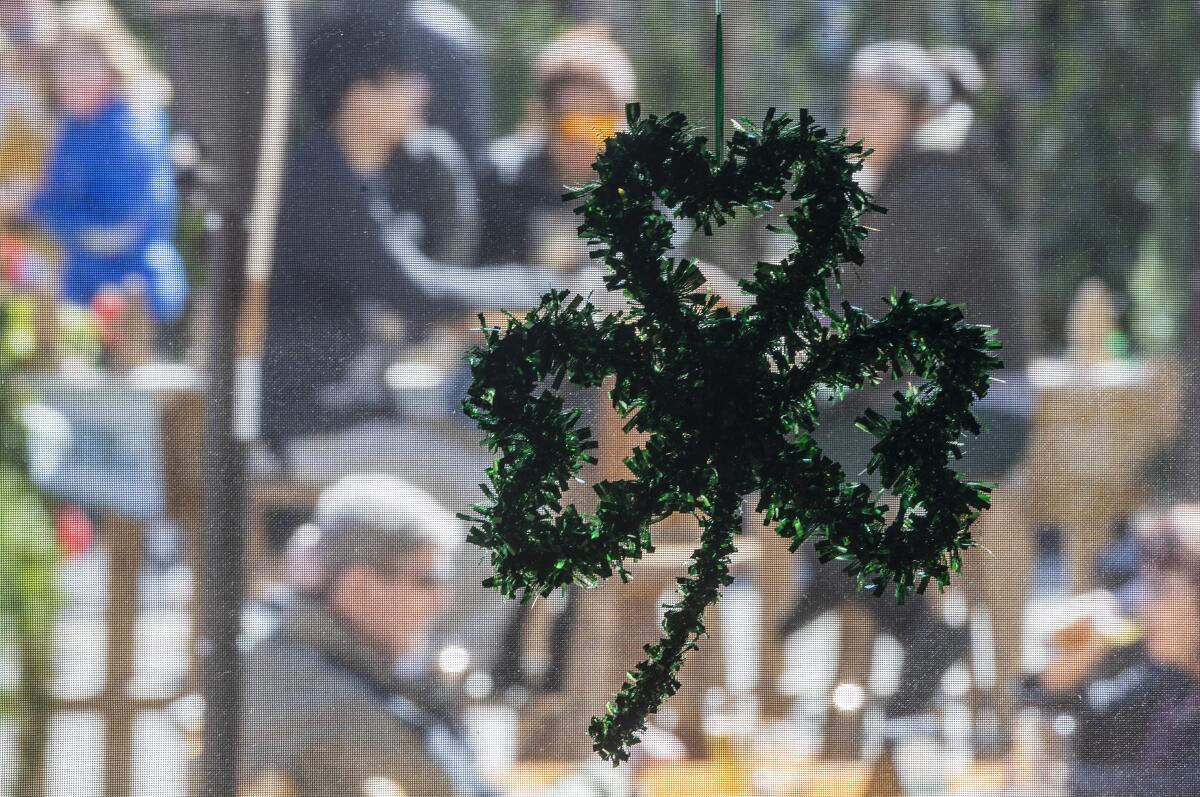
Ten more — Sacramento, San Diego, Riverside, Ventura, Lake, Monterey, Santa Barbara, Sutter, Tehama and Tulare — will do so Wednesday.
“This is another strong step forward in our responsible recovery from COVID-19,” San Diego County Supervisor Nathan Fletcher said in a statement. “While it has been a long year, particularly for our gyms and restaurants, the vaccine has given us hope that we can not only save lives, but get our way of life back.”
Ventura County Supervisor Linda Parks also cheered the region’s advancement, saying “we want that to snowball” and lead to a fuller reopening.
But, she noted, “even with this opening, COVID is still out there — fortunately, not to the degree that it was before.”
Though the orange and yellow tiers provide wider latitude for businesses and other public spaces to operate, reaching red means significant changes.
Counties in the purple tier have to suspend or severely limit indoor operations across a wide swath of business sectors. Moving to red clears them to permit indoor dining at restaurants and movie theater showings at 25% capacity; allow students in grades seven through 12 to return to schools for in-person instruction; reopen indoor gyms and dance and yoga studios at 10% capacity; and expand capacity caps at nonessential stores and libraries. Museums, zoos and aquariums also can reopen indoors, at 25% capacity.
Amusement parks can open at 15% capacity, with other modifications, starting April 1. That same day, the cap on attendance will be raised to 20% for live performances and outdoor sports.
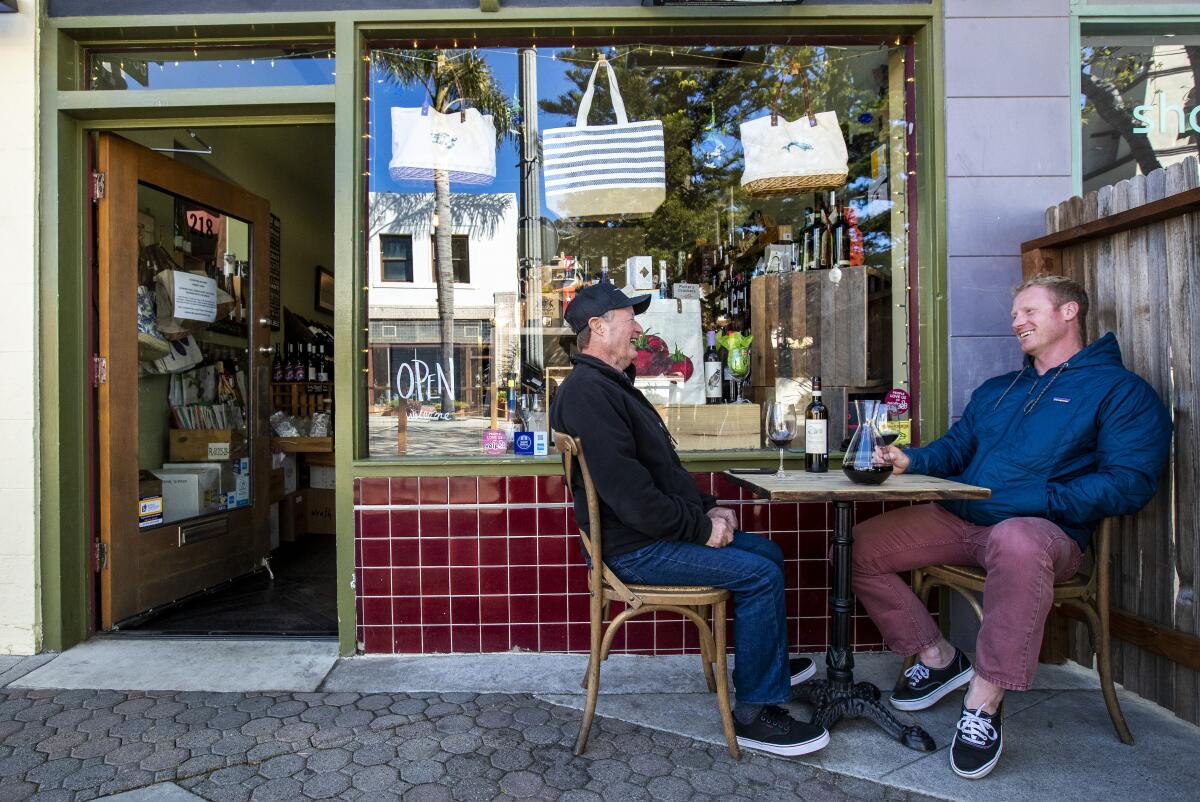
For some, optimism about the change was met with some jitters.
“I’m happy people are getting back into restaurants, and I’m happy businesses are being brought back in, but I’m also happy with the 25% [capacity],” said Jonathan Mercer, 37, as he shared a bottle of wine with his father at an outdoor restaurant Tuesday. “Let’s take it slow.”
Mercer, a paramedic, said he has witnessed the severity of COVID-19 firsthand and isn’t ready to let his guard down — particularly as new coronavirus variants raise cause for concern.
“If there’s one thing I’ve learned over the last year, it’s to not underestimate what’s going on,” he said, “and just understand that we don’t know very much.”
Restaurants, movie theaters, gyms reopen in L.A. County today
With the latest advancements, 42 of the state’s 58 counties — home to almost 35.2 million Californians — are in the red tier.
Only 11 counties are left in the purple: Glenn, Yuba, Nevada, San Joaquin, Stanislaus, Merced, Madera, Fresno, Kings, Inyo and Kern.
Four counties — Plumas, Sierra, Mariposa and San Mateo — are in the orange tier, which is even more lenient than red. As of this week, only Alpine County had made it all the way to the least-restrictive yellow tier.
To advance to a less-restrictive tier, counties must meet not only the case rate requirement but other thresholds regarding the rate of positive test results and a health-equity metric intended to ensure that the positive case rate in poorer communities is not significantly higher than the county’s overall figure.
Counties need to record two straight weeks of qualifying data to advance. Yet some business owners, who have experienced opening-and-closing whiplash over the last year, are still proceeding with caution.
“There’s a lot of factors,” said Tina Thayer, 42, who owns a restaurant, market and wine shop in Ventura called Paradise Pantry. “We’ve been down in staff ... and we have to rearrange to use the space from when we couldn’t use it for seating.”
On Tuesday, the restaurant was still full of boxes and stacked tables while she and her team worked on a plan to reopen. Because of the restaurant’s size, 25% capacity would allow for only one table inside, Thayer said, which doesn’t make sense operationally. Instead, she is going to wait for the county to allow 50% capacity, which she expects will happen “faster than we’re ready for anyway.”
After months of COVID-19 closures, Los Angeles County unlocked a significant portion of its battered business sector Monday, allowing in-restaurant dining, gym workouts, movie-going and a host of other activities at indoor venues.
Fitness centers across L.A. County are allowed to reopen at limited capacity and with social distancing and other restrictions.
The state’s tier framework sets a cap on how lenient counties can be when it comes to coronavirus-related restrictions. However, health officials at the local level can keep stricter rules in place.
The rapid move toward a significant reopening of the state’s economy reflects two trends: continued declines in coronavirus case rates and a steady increase in vaccinations.
Over the last week, California has reported an average of 3,151 new coronavirus cases per day, a decrease of nearly 40% from two weeks ago, according to data compiled by The Times.
The number of severely ill COVID-19 patients has also tumbled. On Monday, there were 3,058 coronavirus-positive Californians hospitalized statewide, with 827 in intensive care. Both figures are the lowest seen since early November, when the state’s catastrophic fall-and-winter wave was just beginning.
The death rate is also falling, though it remains high. Over the last week, an average of 224 Californians died from COVID-19 each day.
The pandemic has claimed nearly 56,000 lives statewide.
The number of Americans who had been infected with the coronavirus before the holiday surge may have been twice as high as official tallies indicated.
Providers throughout California have administered more than 12.6 million total doses of COVID-19 vaccines — and roughly 1 in 5 residents has gotten at least one shot, Times data show.
Over the past week, an average of 286,921 doses were doled out per day statewide. Two of the available vaccines, from Pfizer-BioNTech and Moderna, require two doses, administered weeks apart. The other, from Johnson & Johnson, entails a single shot.
San Francisco Mayor London Breed received the Johnson & Johnson vaccine Tuesday in the low-income neighborhood where she grew up and where the vaccination rate has been low.
“This is how we end the pandemic. When it’s your turn, get vaccinated,” Breed, 46, wrote on Twitter.
Though California has turned a significant corner, the coronavirus could easily rebound if too many people cast off their masks, crowd together and throw caution to the wind before enough residents have been vaccinated, officials and experts warn.
“That we’re here today is not a miracle,” L.A. County Public Health Director Barbara Ferrer said Monday. “Our recovery represents the deep commitment by hundreds of thousands of individuals, and many thousands of businesses, to adhering to safety measures and to making sacrifices that keep each other safe.”
At Finney’s Crafthouse in Ventura, that sense of sacrifice — and relief — was evident Tuesday afternoon as music blared inside the cavernous restaurant, which hasn’t seen indoor patrons in months. Staffers shimmied as they folded napkins, cleaned glasses and prepared for what the following day would bring.
The last year “has really taught me to be resilient, and also just go with the flow,” said J.R. Jeffries, the restaurant’s general manager. “Things open and close, regulations change. ... We don’t want any issues. We just want to stay open, have fun and feed people good food.”
Times staff writer Maura Dolan contributed to this report.
More to Read
Sign up for Essential California
The most important California stories and recommendations in your inbox every morning.
You may occasionally receive promotional content from the Los Angeles Times.
